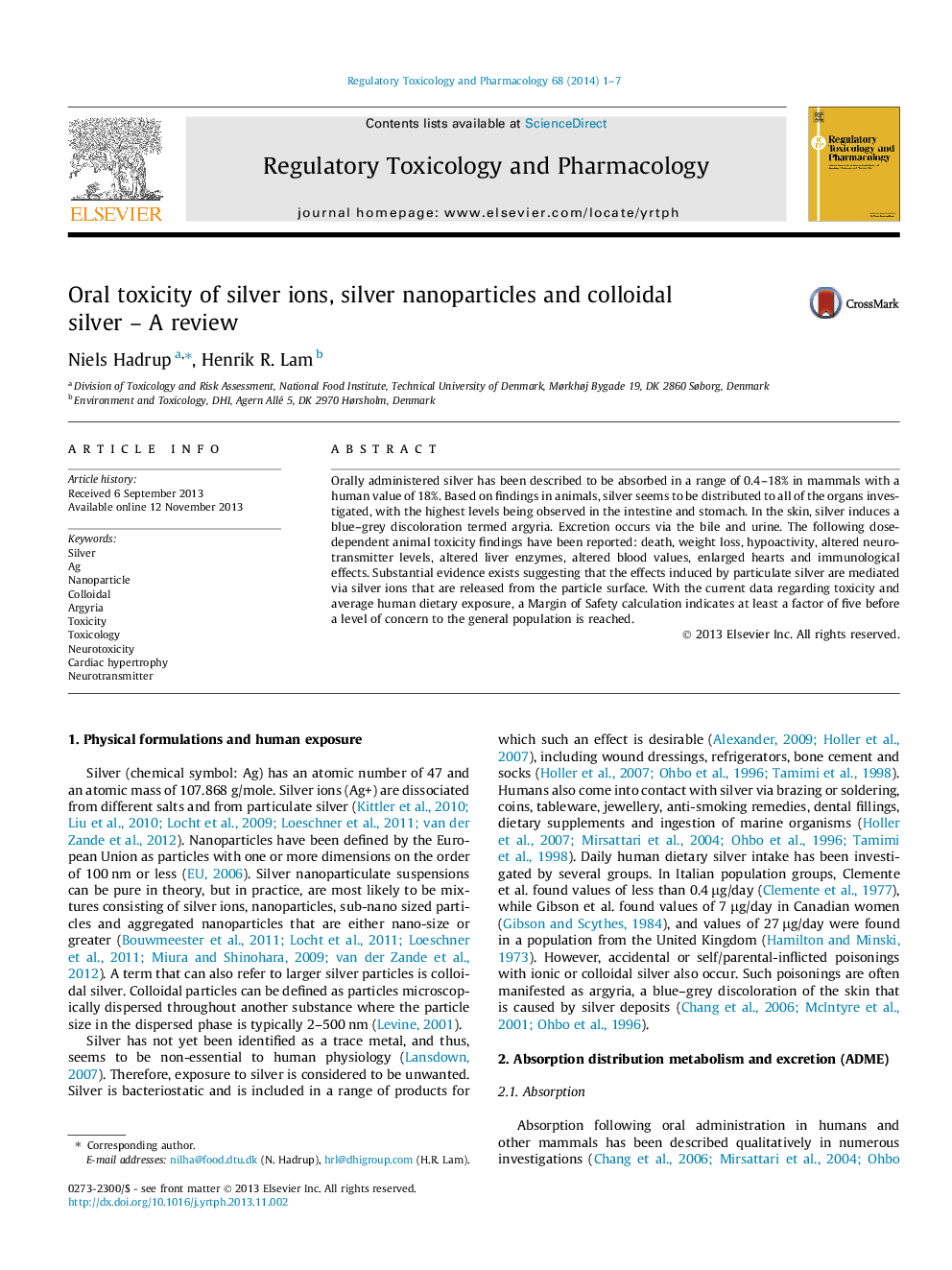| Article ID | Journal | Published Year | Pages | File Type |
|---|---|---|---|---|
| 5857353 | Regulatory Toxicology and Pharmacology | 2014 | 7 Pages |
Abstract
Orally administered silver has been described to be absorbed in a range of 0.4-18% in mammals with a human value of 18%. Based on findings in animals, silver seems to be distributed to all of the organs investigated, with the highest levels being observed in the intestine and stomach. In the skin, silver induces a blue-grey discoloration termed argyria. Excretion occurs via the bile and urine. The following dose-dependent animal toxicity findings have been reported: death, weight loss, hypoactivity, altered neurotransmitter levels, altered liver enzymes, altered blood values, enlarged hearts and immunological effects. Substantial evidence exists suggesting that the effects induced by particulate silver are mediated via silver ions that are released from the particle surface. With the current data regarding toxicity and average human dietary exposure, a Margin of Safety calculation indicates at least a factor of five before a level of concern to the general population is reached.
Keywords
Related Topics
Life Sciences
Environmental Science
Health, Toxicology and Mutagenesis
Authors
Niels Hadrup, Henrik R. Lam,
